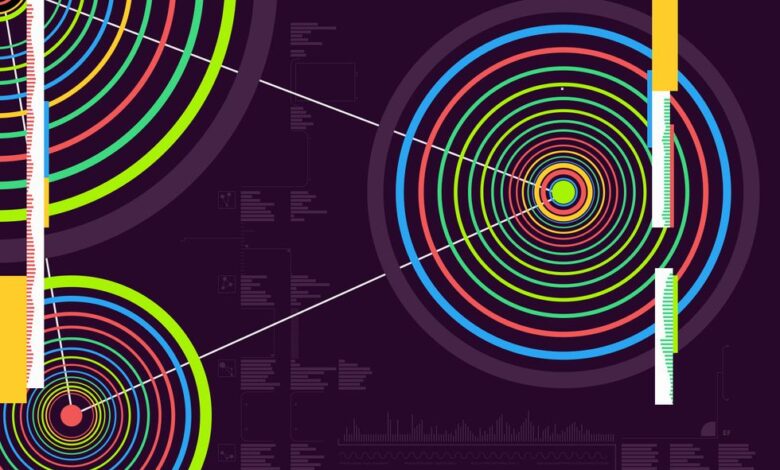IEEE Spectrum’s Top Telecom Stories of 2023

Faster and better—or broken and worse? IEEE Spectrum‘s readers gravitated to the extremes in the kinds of telecom stories they read this year. On the one hand, stories about Russia’s satellite jamming operations in Ukraine and stumbling 5G performance around the world attracted a lot of attention from our visitors in 2023. But readers also seemed particularly eager to know more about some of the newest and the best in the field—data rate records shattered and new ways to keep identities and authentications safe, to name just a couple.
Keep scrolling to see the top 10 stories that IEEE Spectrum readers spent the most time with over the course of 2023.
1. Satellite Jamming Reaches New Lows
ASUYOSHI CHIBA/AFP/Getty Images
Russia’s ongoing invasion of Ukraine has, over its nearly two-year course, has revealed a lot about the current state of electronic warfare. In early 2023, it became clear that one new branch of electronic warfare was the jamming of low Earth orbit (LEO) communications satellites. These satellites—typically CubeSats, and orbiting 2,000 kilometers or lower—have brought new challenges to satellite jamming compared to their bus-sized geostationary brethren.
One of the key features for LEO satellite constellations is their need to frequently hand off signals to the next satellite coming over the horizon. These hand-offs need to happen approximately every 7 to 10 minutes, and each time, they introduce a new opportunity for a jammer to interrupt the signal. LEO satellites also generally have less space, compute, and power for security measures compared to larger satellites—and many rely on off-the-shelf components that often come with additional vulnerabilities.
The upside is that a lot of work is being put into making these new satellite constellations more secure, even though it will likely take a lot of rethinking about how to design and build the thousands upon thousands of satellites that make up these growing networks.
2. 5G Networks are Performing Worse. What’s Going On?
iStock
2023 is probably the year in which 5G really hit its stride. The only problem is—that stride is a bit less impressive than the telecom industry may have hoped for. Specifically, upload and download speeds for 5G networks around the world were generally worse, compared to performance metrics from a year earlier.
There are some caveats to this seeming flop—for one thing, every cellular generation tends to go through some growing pains as new capacity is first built out (and performs well) and then used by more people (generally dragging speeds back down due to network congestion). But there are some unique aspects of 5G that haven’t done it any favors: Piggybacking off of 4G networks, failure to capitalize on millimeter wave spectrum, and increasingly complex technologies going into the networks.
One thing to keep an eye on for the years ahead? How 5G’s sluggish start impacts the research directions that the industry prioritizes for 6G and beyond.
3. Vint Cerf on 3 Mistakes He Made in TCP/IP
Peter Adams
Vint Cerf (AKA “Mr. Internet“) was the recipient of the IEEE’s 2023 Medal of Honor. Cerf was instrumental in the early days of the Internet, including co-creating much of the infrastructure that the global network relies on to this day. He didn’t get everything right, however.
Cerf recounted to IEEE Spectrum three of the mistakes he made while developing the Internet Protocol Suite (more commonly referred to as TCP/IP). They may seem obvious in hindsight—just how many bits would be needed for Internet addresses (32 wouldn’t be enough!) or just how important security would be. But Cerf did get a lot right. Even if he admits that, like everyone else, he never really appreciated what the Internet would become in the following decades.
4. This Mirror Reverses How Light Travels in Time
Nature Physics
In an esoteric bit of research this year, a group of researchers based at universities in New York City discovered how to pass a signal through something called a “time interface”—the result being that the entire signal acted like it was moving back in time. Of course, the signal wasn’t actually traveling into the past. One way to think of the phenomenon is that it’s similar to how you can record yourself saying a word, and then playing that recording in reverse: You’ve changed the direction in time in which the word is being spoken.
If you’re still hanging in there after time interfaces and reversed signals, it’s fair to now ask, why? Beyond just being a physical proof of something that has been theorized for six decades, there are practical applications in telecom (as well as radar and optical computing). Time reversal is commonplace in signal processing. Currently, that’s often done digitally, which places demands on a network’s time, energy, and memory capacity. A time interface that can naturally reverse signals would be much faster and less complex.
5. Google Develops Quantum-Safe Security Keys
GK Images/Alamy
The looming advent of quantum computing has had cybersecurity researchers hunting for ways to make cryptographic systems that can withstand the new capabilities of such computers. Google researchers developed a solution for quantum-safe security keys, the physical external devices that function as an alternative to passwords. Their technique is a quantum-resilient implementation of the FIDO2 standard for security keys.
Security keys admittedly don’t have a broad uptake to date—passwords remain far more common. But their use is growing, and they are harder to compromise because they require actually plugging in the physical key to the computer to access an application or service. The Google researchers in question have helped to ensure that growing popularity won’t be cut short when quantum computing becomes more mainstream and traditional cryptography cracks. Unfortunately, even a post-quantum security key remains just as vulnerable to side-channel attacks, which is when a hacker gains direct physical access to the key. So even in the future, try not to misplace a security key.
6. Can We Identify a Person From Their Voice?
Chad Hagen
In December 2020, a fishy distress call from a boat off the coast of Maine opened up an investigation into its authenticity—an investigation that played into the resurgence of something called “voiceprinting.” In the same way that a person’s unique fingerprints can be used to identify them, the idea with voiceprinting is that, given a recording, the same can be done with a person’s voice.
The technique has had a controversial past—the concept first emerged around 1911, but only came into prominence in the 1960s. By 1979, however, it was discredited, at least until the last few years. The technology’s effectiveness remains unproven, however. The U.S. Secret Service claims to be able to identify an individual from a voice-only line-up, and Chinese courts have taken voiceprints into account in hundreds of judgments already. But a lack of standards and an increasing reliance on deep learning models to make vocal matches—models that cannot explain the connections they’ve made—suggest there’s a long way to go before voiceprinting ever gets its day in court.
7. How Police Exploited the Capitol Riot’s Digital Records
Gabriel Zimmer
The U.S. Capitol riot on 6 January, 2021 resulted in the largest collective investigation in U.S. history, as the Federal Bureau of Investigations sought to track down and identify as many of the participants as possible. But the FBI didn’t turn to state-of-the-art technologies and techniques to ID rioters—they used the same surveillance techniques used every day, in even the most minor criminal cases.
What really set the FBI investigations apart from anything that came before, as contributor Mark Harris wrote for IEEE Spectrum on the two-year anniversary of the incident, is the sheer scale of the surveillance tools that the FBI tapped into, and the huge implications that has for the future of digital surveillance. Questions like whether or not technologies like geofencing are constitutional probably won’t be settled any time soon—but they have implications for everyone, in the U.S. and beyond, as we all create more and more detailed digital records of our daily lives.
8. NASA’s Laser Link Boasts Record-Breaking 200-Gb/s Speed
MIT Lincoln Laboratory
Everyone loves a good speed record. This year, NASA broke the data rate record for laser communications by beaming 200 gigabits of data per second from its TBIRD system (short for TeraByte InfraRed Delivery). TBIRD is onboard the agency’s Pathfinder Technology Demonstrator 3 satellite, orbiting roughly 530 kilometers above the Earth’s surface. The achievement doubled the laser comms record set just last year, also by TBIRD.
The rate is equivalent to TBIRD transmitting the equivalent of 1,000 high-definition movies (2 terabytes of data) in a single 5-minute overhead pass. It’s orders of magnitude faster than the radio links traditionally used for satellite communications. High-speed laser comms would be a boon for space exploration, although there are still some general hurdles to overcome: Beams tend to dissipate over interstellar distances, and the Earth’s atmosphere can wreak havoc on signal quality. (Although to that end, NASA can boast another recent laser comms record shattered, this one achieved mere weeks ago—the first video streamed from deep space by laser, achieving 267 megabits per second download speed.)
In addition to the above challenges that TBIRD faced down, the team also had to make sure the components—intended for terrestrial use—would survive the rigors of launch and the hostile space environment. In one early vacuum test before launch, for example, the system’s optical fibers melted because heat couldn’t be wicked away fast enough. Still, the researchers hope to be able to push laser communications as far out as the moon, and in the meantime, it will have plenty of applicability planetside as well.
9. Cory Doctorow: Interoperability Can Save the Open Web
Tim Robberts/Getty Images
In September, IEEE Spectrum contributor sat down with journalist and author Cory Doctorow to get his thoughts on Internet interoperability. In short, Doctorow’s argument is that the bigger that tech companies get, the more users risk losing—in other words, when a company becomes a monopoly (or close to one), the easier it is for that company to make the shift from “what is good for our users and good for business” to simply “what is good for our business.”
For Doctorow, interoperability is the key to a good Internet future. Quite simply, things should simply work together. That would require reversing the trend by tech companies to turn their platforms, services, and apps into walled gardens. Instead, Doctorow wants to see a “virtuous circle,” in which users are free to switch between services without friction, forcing companies to actually do right by consumers. And he’s got some ideas for how to make that happen.
10. Fiber-Optic Cables Are Natural Earthquake Detectors
MirageC/Getty Images
Fiber-optic cables: Great for moving lots of data around quickly. As it turns out, they’re also great at detecting earthquakes. Because of the medium of transmission—light beams through a glass tube—they’re naturally sensitive to any kind of vibration, including those from an earthquake.
Seismometers are expensive to maintain—the state of California alone has over 700 of them, and they each cost up to US $50,000. Of course, installing fiber optic cables isn’t cheap, but they can pull double duty as communications channels and earthquake detectors. And they’re already (almost) everywhere.
IEEE Spectrum




